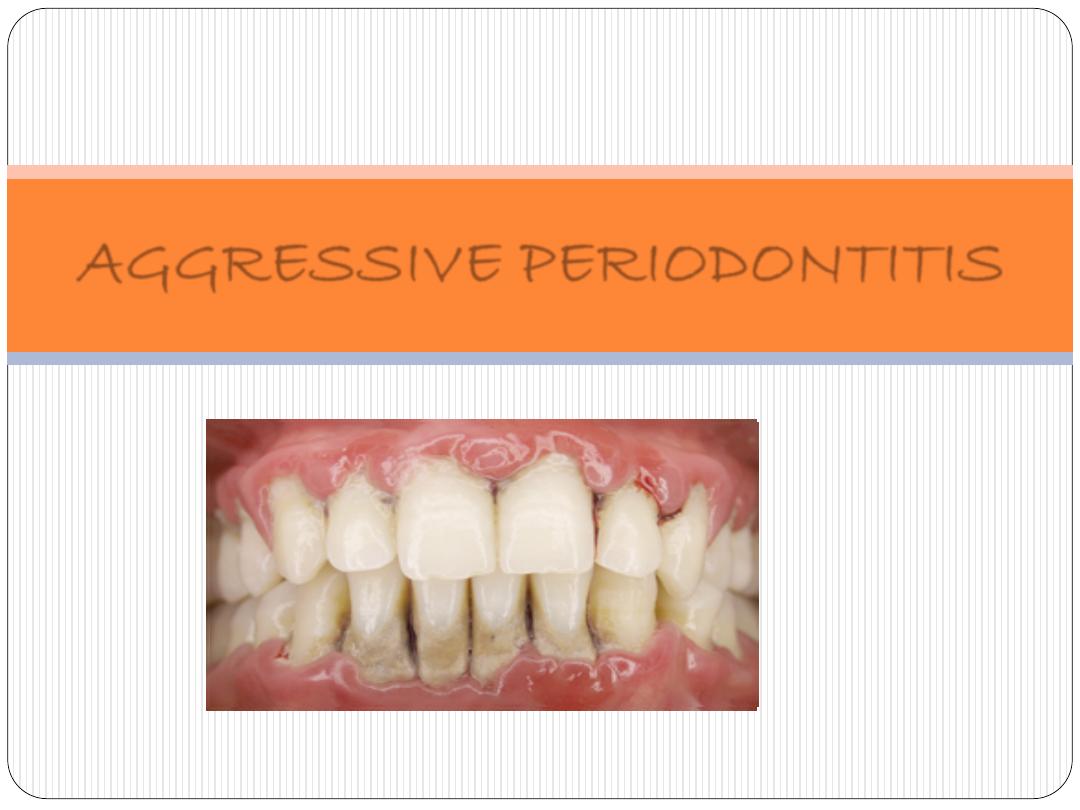
NIDHI
B.D.S FINAL YEAR
AGGRESSIVE PERIODONTITIS
DR Hussein Al
Dabbagh
dr.
Hussein Al
dabbagh

CONTENTS
I
NTRODUCTION
H
ISTORY
A
GGRESSIVE PERIODONTITIS
D
IFFERENCE BETWEEN CHRONIC AND AGGRESSIVE
PERIODONTITIS
C
LINICAL FEATURES
L
OCALIZED AGGRESSIVE PERIODONTITIS
G
ENERALIZED AGGRESSIVE PERIODONTITIS
D
IFFERENCE BETWEEN
LAP & GAP
R
ISK FACTORS
o
M
ICROBIOLOGIC FACTORS
o
I
MMUNOLOGIC FACTORS
o
G
ENETIC FACTORS
o
E
NVIRONMENTAL FACTORS
C
ONCLUSION
REFERENCES
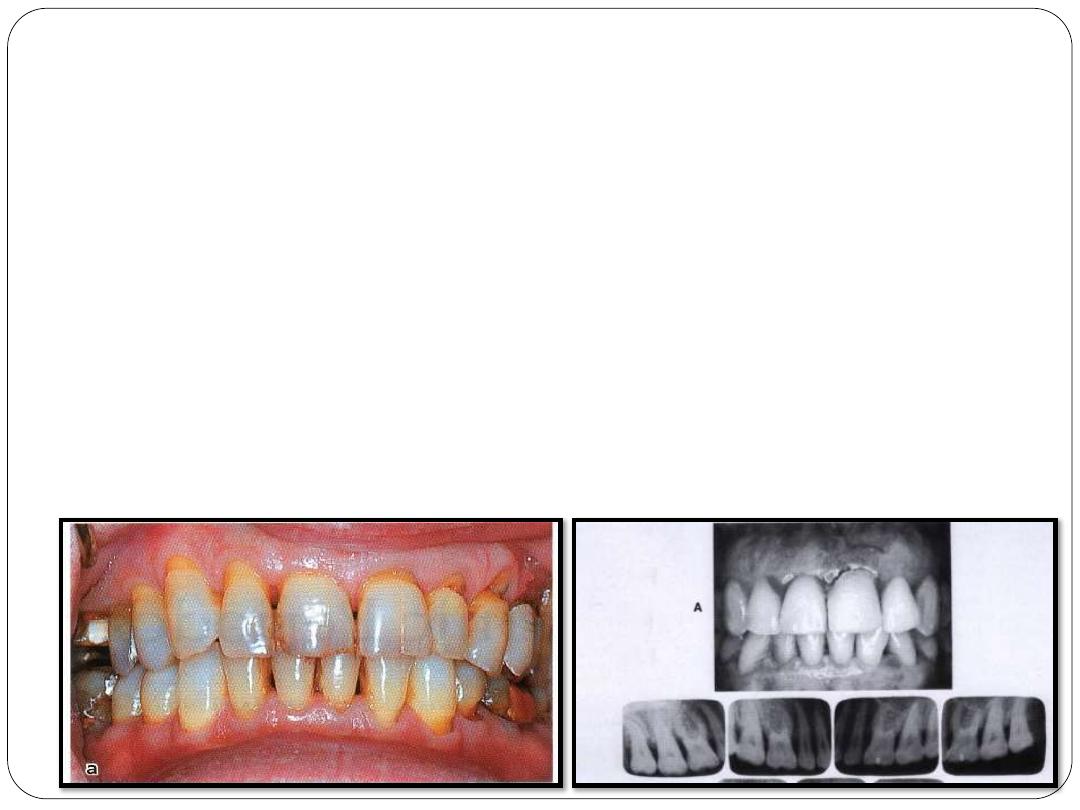
INTRODUCTION
Periodontitis is defined as an inflammatory
disease of the supporting tissue of the teeth
caused by specific microorganisms, resulting in
progressive destruction of the periodontal
ligament and alveolar bone with pocket
formation, recession, or both.

HISTORY
1923, Gottlieb -- Case of epidemic influenza
“Diffuse atrophy of the alveolar bone”
Loss of collagen fibers in the periodontal
ligament
Replacement by loose connective tissue
Extensive bone resorption,
Resulting in a widened periodontal
ligament space.
The gingiva apparently was not involved.

In 1938 Wannenmacher described incisor-first
molar involvement and called the disease
Parodontitis marginalis progressiva.
Finally in 1967, Chaput and colleagues and by Butler
in 1969 introduce the term
Juvenile Peridontitis.
In 1989 the World Workshop in Clinical
Periodontics categorized this disease as
‘Localized
Juvenile Periodontitis’ (LJP)
Most recently , it is named as
Aggressive
Periodontitis.

AGGRESSIVE
PERIODONTITIS
Aggressive periodontitis (AgP) comprises a
group of rare, often severe, rapidly
progressive forms of periodontitis often
characterized by an early age of clinical
manifestation and a distinctive tendency for
cases to aggregate in families.
(Clinical Periodontology and Implant Dentistry
4
th
edition)

Aggressive periodontitis describes three of
the formerly classified as
“early-onset
periodontitis”
They are:
L
OCALIZED AGGRESSIVE PERIODONTITIS
G
ENERALIZED AGGRESSIVE PERIODONTITIS
R
APIDLY PROGRESSIVE PERIODONTITIS

CHRONIC
PERIODONTITIS
AGGRESSIVE
PERIODONTITIS
AGE
More prevalent in adults
but may be present in
children & adolescents
Circumpubertal onset in
LAP & under 30 years of
age in GAP
RATE OF
PROGGRESSION
Slow rate of progression
Rapid rate of progression
with pronounced episodic
events of attachment and
bone loss
MICROBIAL
AETIOLOGY
Consist of both aerobic &
anaerobic gram positive &
gram negative
microorganisms
Key microorganisms are
Aggregatibacter
actinomyctemcomitans &
Prevotella intermedia
IMMUNOLOGICAL
AETIOLOGY
No abnormalities detected
Hyper responsive
macrophage phenotype &
phocyte abnormalities

CHRONIC PERIODONTIS
AGGRESSIVE
PERIODONTITIS
DISTRIBUTION
Localized when less than 30%
of sites involved
Generalized when more than
30% of sites are affected
Localized when 1
st
molar &
incisors & no more than two
permanent teeth are
involved
Generalized when at least
3 permanent teeth other
than 1
st
molar & incisor are
involved
LOCAL FACTORS
Presence of local factors
directly relates to the
amount of destruction
present
Presence of local factors
does not commensurate
with the amount of
destruction present
FAMILIAL
AGGREGATION
Lacks strong evidence of
correlation between
particular genes and
periodontitis
Evidence of strong familial
aggregation

FEATURES OF AGGRESSIVE
PERIODONTITIS
(by lang et al. in 1999)
PRIMARY FEATURES
Non contributory medical history
Rapid attachment loss and bone loss
Familial aggregation

SECONDARY FEATURES
Amount of microbial deposits does not
commensurate with the severity of periodontal
tissue destruction
Elevated proportions of aggregatibacter
actinomycetemcomitans (Aa)
Hyper responsive macrophage phenotype with
exaggerated response to bacterial endotoxin
Phagocyte abnormalities
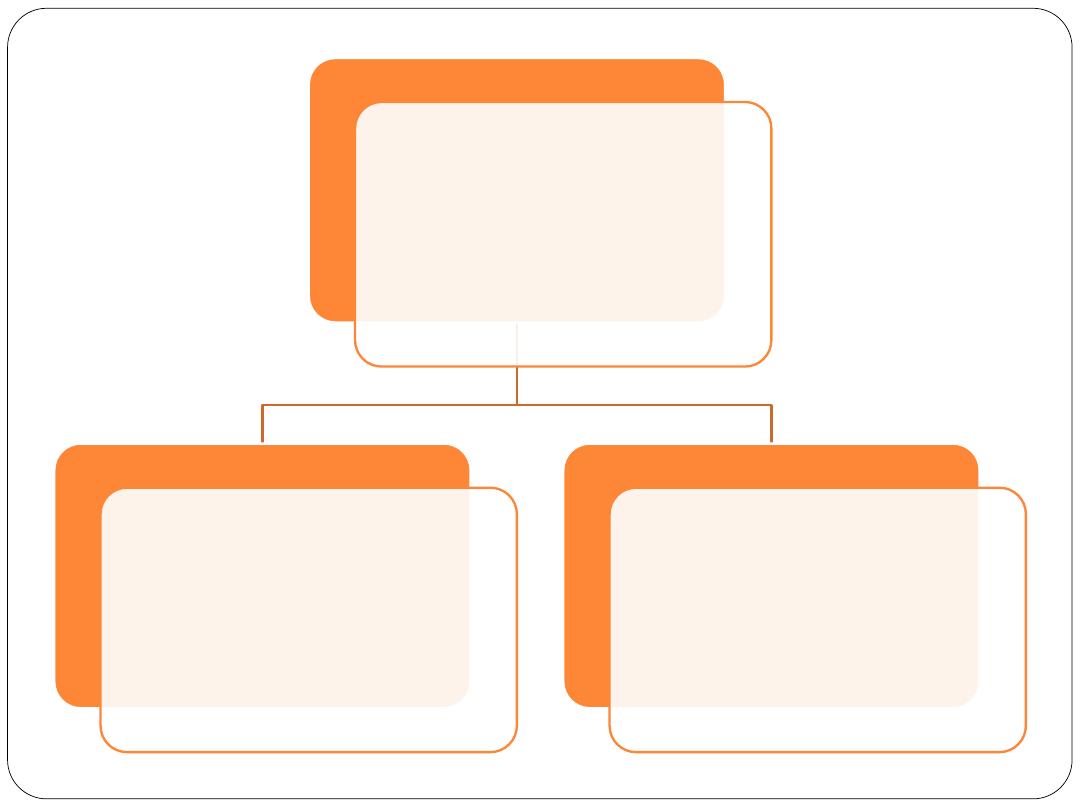
AGGRESSIVE
PERIODONTITIS
LOCALIZED AGGRESSIVE
PERIODONTITIS
(previously classified as
Localized Juvenile
Periodontitis)
GENERALIZED
AGGRESSIVE
PERIODONTITIS
(previously classified as
Generalized Juvenile
Periodontitis)
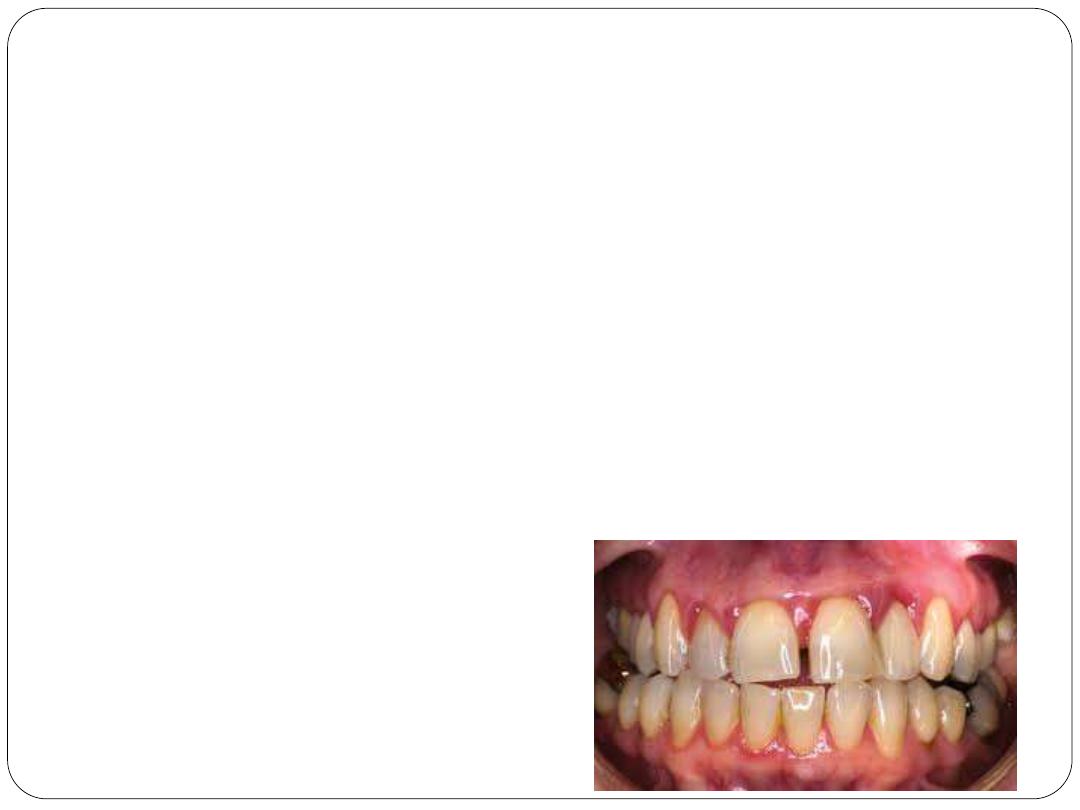
LOCALIZED AGGRESSIVE
PERIODONTITIS
Clinically, it is characterized as having
"localized first molar/incisor presentation with
interproximal attachment loss on at least two
permanent teeth, one of which is a first molar,
and involving no more than two teeth other
than first molars and incisors” .

Clinical features:
1.
Age of onset at about puberty.
2.
Affects both the sexes
3.
Main characteristic
feature affects mainly the
FIRST MOLARS
and
INCISORS
4.
Lack of clinical inflammation
despite the presence of
deep periodontal pockets.
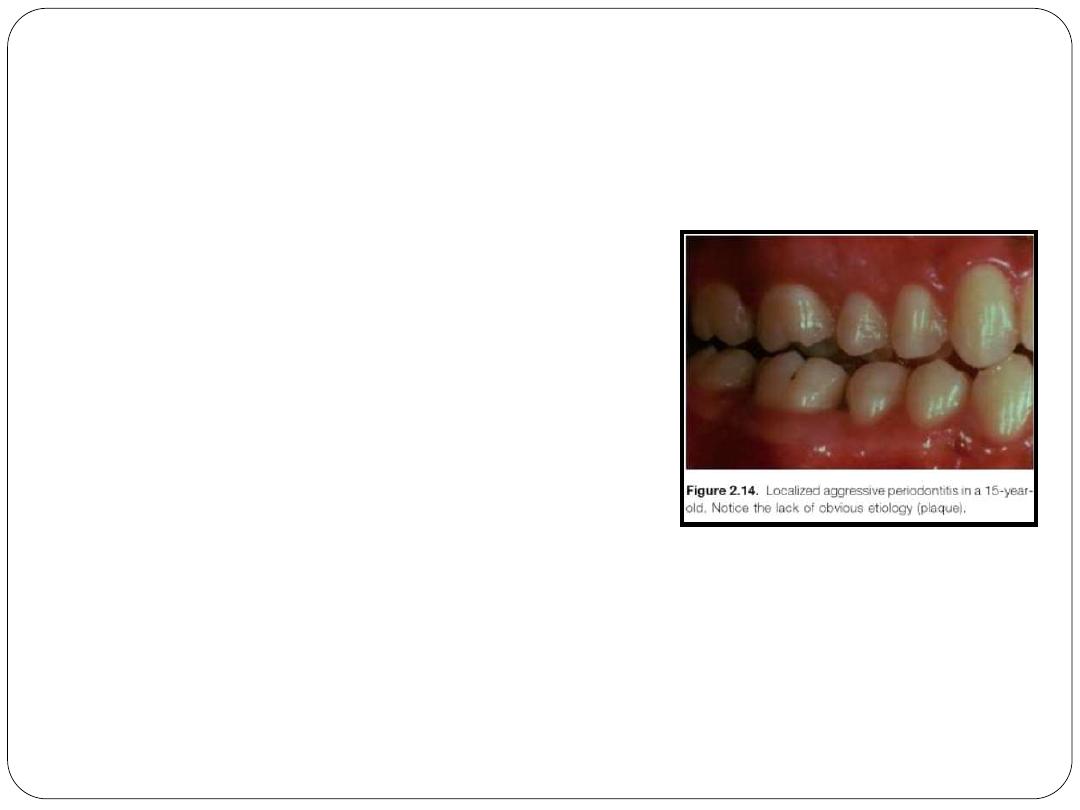
5.
Plaque that is present forms
thin biofilm on the teeth.
6.
Plaque contains elevated
levels of :
Aggregatibacter
actinomycetem-comitans
(Serotype b)
Porphyromonas gingivalis
(in some pts)
7.
Disease progresses rapidly and Plaque that is
present forms a thin biofilm on the teeth
and rarely mineralizes to form calculus
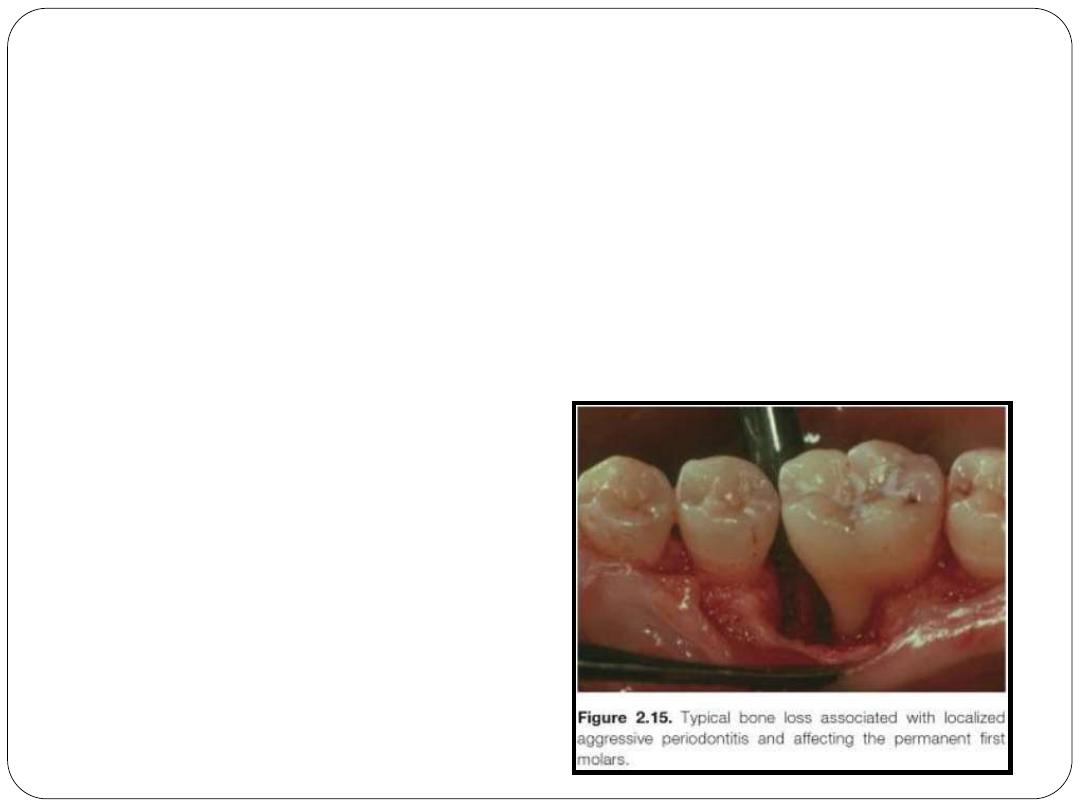
8.
The rate of bone loss is
3 to 4 times
faster than in chronic
periodontitis.
9.
Robust serum antibody response. to
infecting agents

Other Clinical Findings:
1.
Maxillary incisors migrate disto-labially that
results in diastema formation.
2.
Increasing mobility of the
affected teeth
3.
Sensitivity of denuded root surfaces to
thermal and tactile stimuli
4.
Deep, dull radiating pain during mastication.
5.
Periodontal abscess may form.
6.
Regional lymph node enlargement may occur.
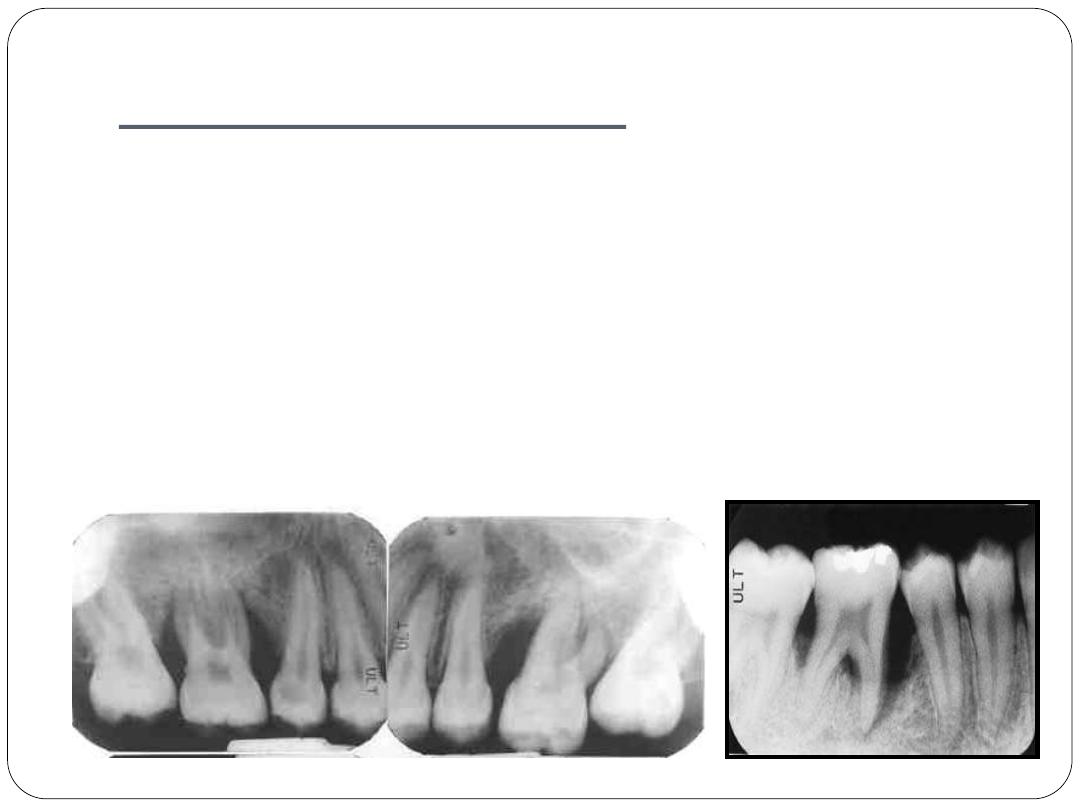
Radiographic finding:
o
Classic diagnostic sign
VERTICAL LOSS
of
alveolar bone around the first molars and incisors.
o
Other finding
“Arc-shaped”
loss of alveolar bone
extending from the distal surface of 2
nd
premolar
to the mesial surface of the 2
nd
molar.
o
Bone defects are usually wider than usually seen
with chronic periodontitis.
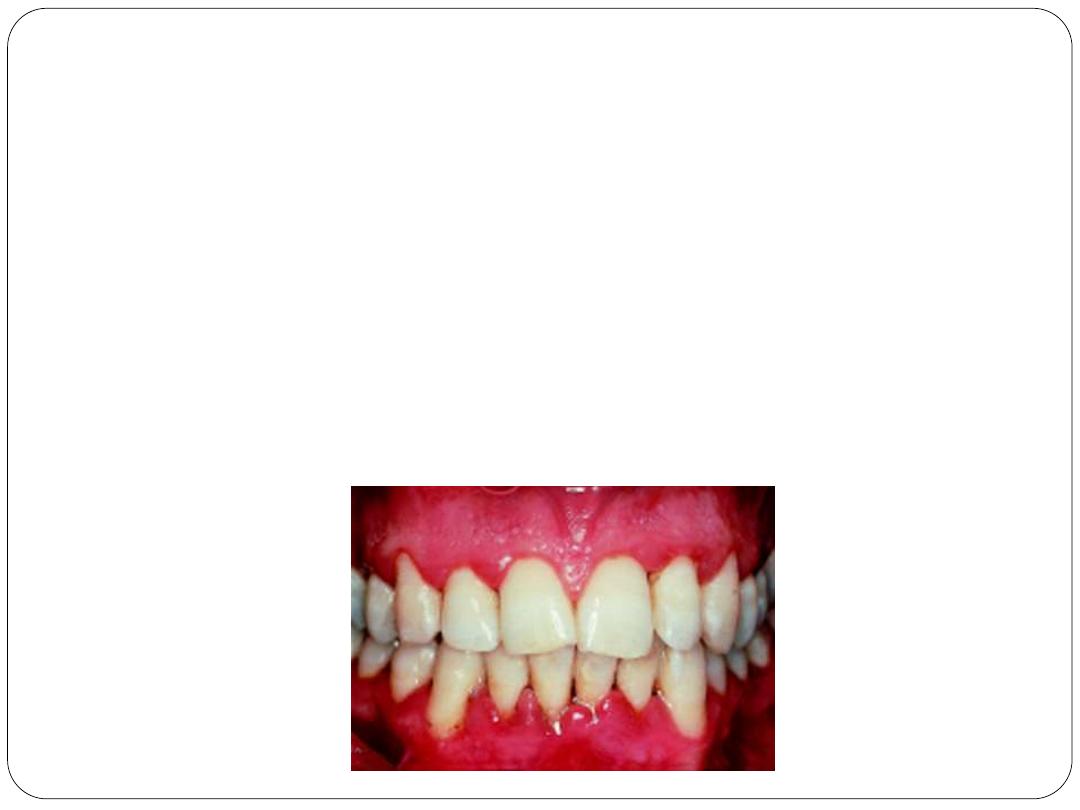
Generalized aggressive
periodontitis
“Characterized by generalized interproximal
attachment loss affecting at least three
permanent teeth other than first molars and
incisors”

FEATURES
Usually affecting persons under 30 years of
age, but patients may be older.
Poor serum antibody response to infecting
agents.
Generalized interproximal attachment loss
affecting at least three permanent teeth
other than first molars and incisors.
Pronounced episodic nature of the destruction
of attachment and alveolar bone.
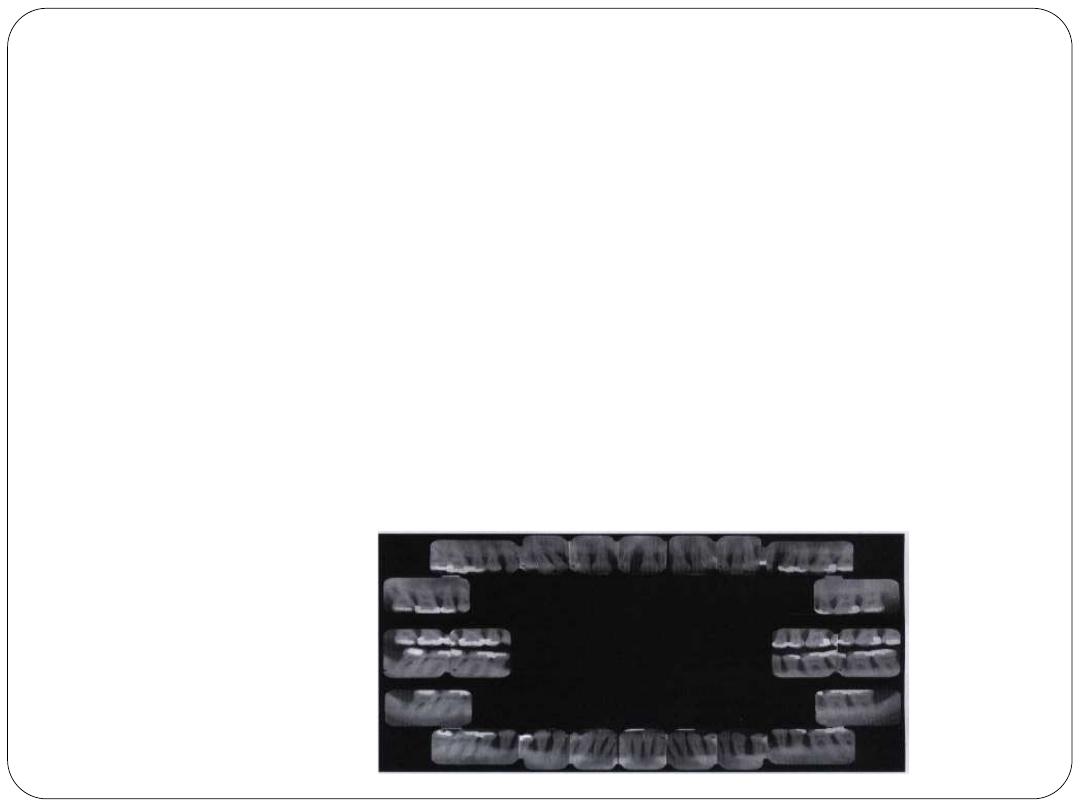
Radiographic features
No definitive pattern of distribution. Ranges
from severe bone loss associated with the
minimal no. of teeth, to advanced bone loss
affecting the majority of teeth in the
dentition.
Patients with GAP demonstrate osseous
destruction of 25% to 60% during a 9 week
period and other sites show no bone loss.
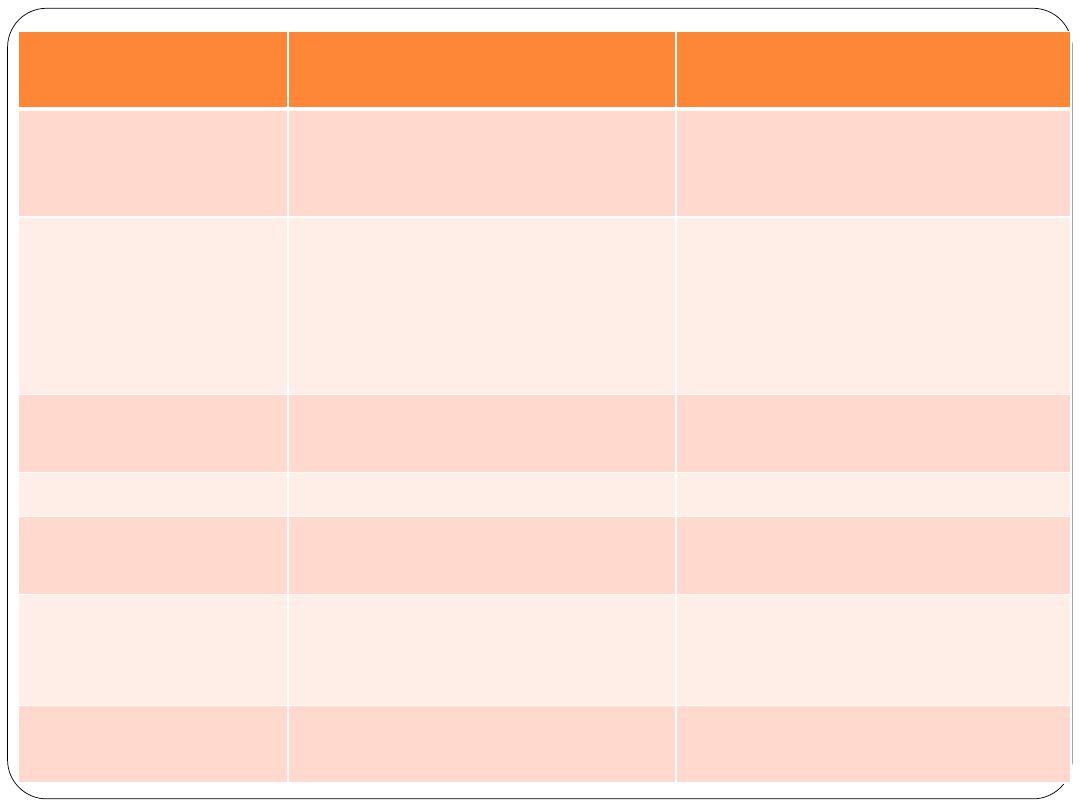
Localized aggressive
periodontitis (LAP)
Generalized aggressive
periodontitis (GAP)
AGE OF ONSET
Circumpubertal
Under 30 yrs of age but
older patients may be
affected
DISTRIBUTION
Localized 1
st
molar or incisor
presentation with
interproximal attachment
loss & not involving more
than 2 permanent teeth
Generalized interproximal
attachment loss affecting at
least three permanent teeth
other than 1
st
molars &
incisors
SEVERITY
Rapid & severe loss of
alveolar bone
Episodic in nature
AETIOLOGY
Predominantly Aa
Predominantly P. gingivalis
IMMUNOLOGICAL
RESPONSE
Robust serum antibody
response to infecting agent
Poor serum antibody
response to infecting agent
PRESENCE OF
LOCAL FACTORS
There is minimal amount of
local factors present on the
affected teeth
There is marked plaque &
calculus accumulation
FAMILIAL
PATTERN
Strong association
Unclear association
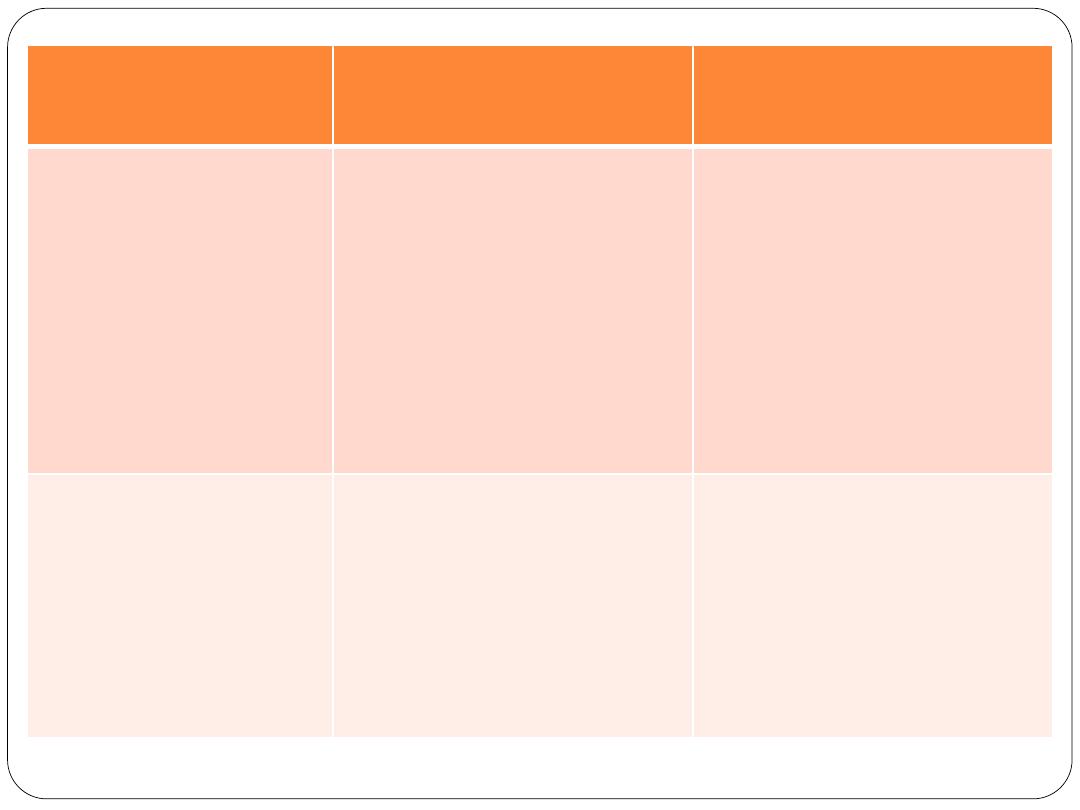
Localized Aggressive
Periodontitis
Generalized Aggressive
Periodontitis
GINGIVAL
INFLAMMATION
Lack of clinical
inflammation despite the
presence of deep pockets
and advanced bone loss
Clinical signs of gingival
inflammation are evident
RADIOGRAPHIC
APPEARANCE
Vertical or arc-shaped
bone loss around 1
st
molars
and incisors
There is generalized
extensive destruction or
bone loss around involved
teeth

Risk factors for aggressive form of
periodontitis
Microbiologic factors
Immunologic factors
Genetic factors
Environmental factors

Microbiologic factors
Presence of Aggregatibacter
actinomycetemcomitans (Aa) is a key agent in
LAP as it is present in high nos. & the patient
has high titre of serum antibodies against Aa.
Virulence factors possessed by Aa, such as
leucotoxin, lipopolysaccharide, proteases,
collagenases, surface associated material
affect the immune response & lead to
connective tissue destruction and bone
resorption.

Immunologic factors
Defective chemotaxis due to functional defect
of PMNs.
Hyper responsive monocytes that increase
prostaglandin, IL-1 α IL-1βproduction, which
result in one resorption.
Human leucocyte antigen (HLA) A9 & B 15 are
recognized as candidate markers of aggressive
periodontitis.

Genetic factors
Tendency to occur in families: familial
aggregation
Segregation & linkage analysis have shown that
presence of specific gene is responsible for
neutrophil abnormalities
Transmission through autosomal- dominant
mode of inheritance

Environmental factors
Smoking has a significant influence in the
progression of generalized aggressive
periodontitis. Smokers have greater
attachment loss than non smokers.

CONCLUSION
Aggressive forms of periodontitis are currently
considered to be multifactorial diseases developing as a
result of complex interactions between specific host
genes and the environment.
Interactions between the disease process and
environmental factors and genetically controlled
modifying factors are thought to contribute to
determining the specific clinical manifestation of the
disease.
For a successful treatment outcome the conventional
therapy is to be combined with a wide range of
therapeutic procedures to increase the chances of
disease resolution.

REFERENCES
CARRANZA’S CLINICAL PERIODONTOLOGY;
10
th
edition.
J LINDHE; CLINICAL PERIODONTOLOGY
AND IMPLANT DENTISTRY: 4
th
edition

